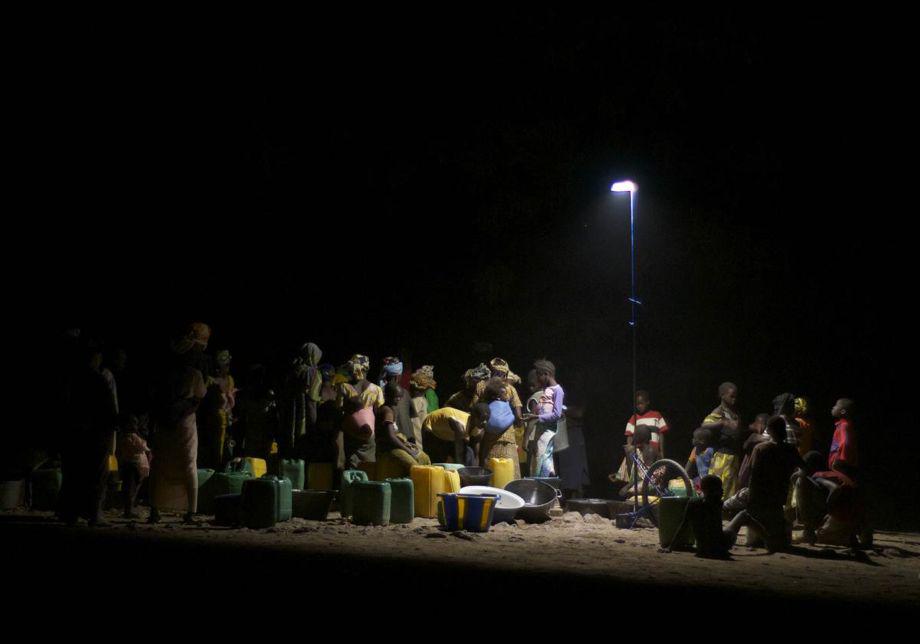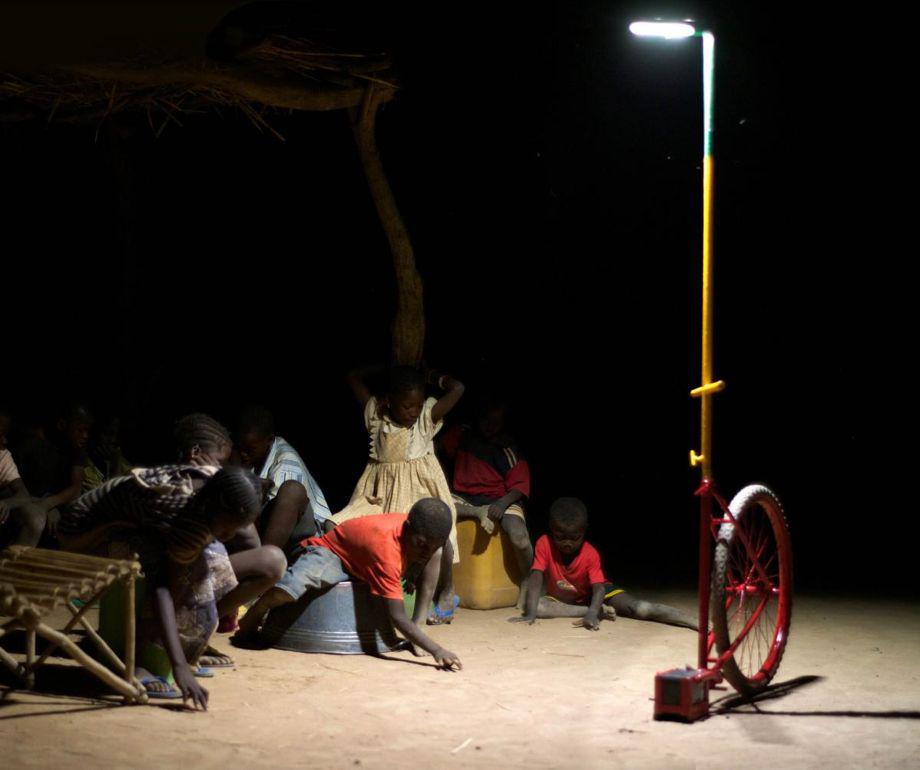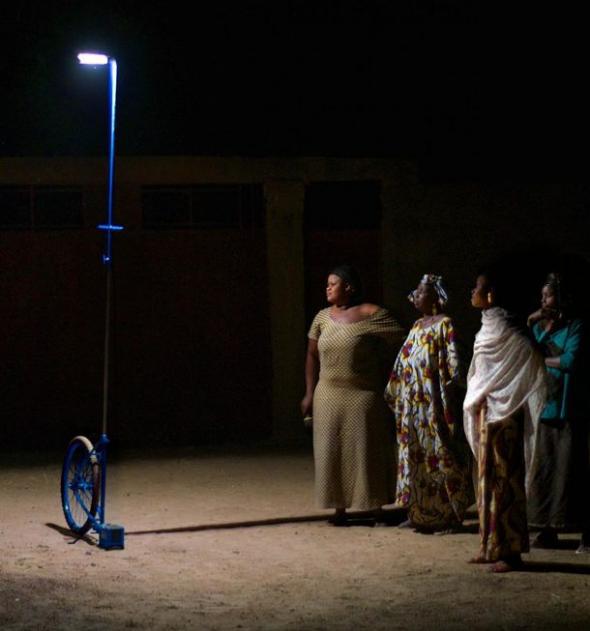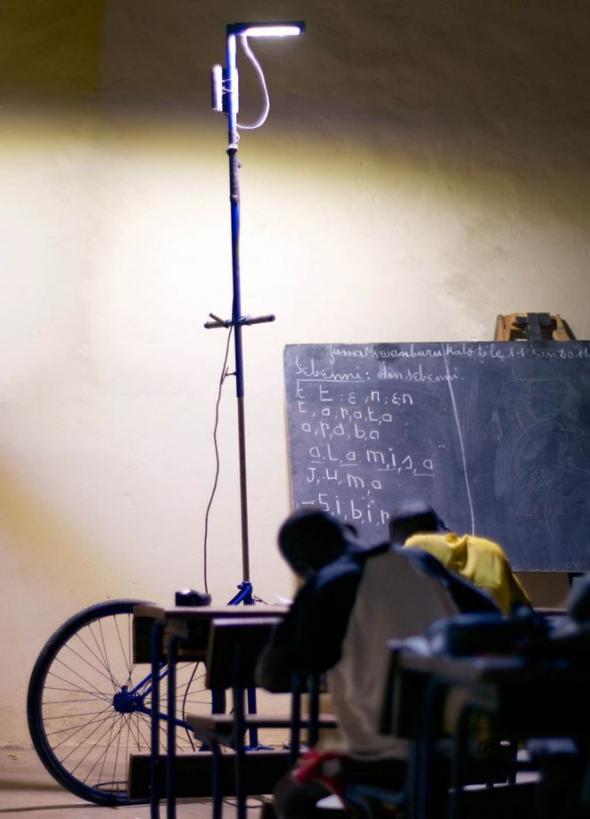Works That Work is a Netherlands-based international magazine about design founded and edited by Peter Biľak. The following story—about Italian architect Matteo Ferroni’s mobile lamp design project that is bringing light to rural Mali—ran in Works That Work, No. 2. Ferroni’s project is also the subject of an exhibition running until May 4 at the Museo Nacional de Antropología of Madrid.
When visitors come to Africa they can suddenly find themselves “cracked open,” as the British writer Richard Dowden put it. One of the reasons is that life’s basic demands become more immediate: Everyday acts such as work, celebration, and education depend on the availability of essentials such as water, light, and food, items whose acquisition, at least in the vast rural areas, is rarely straightforward.
This was certainly the experience of Matteo Ferroni, an Italian architect who first visited Mali in 2010. In a relationship with a Malian singer at the time, he went with the intention of building an open-air theater near Ségou, 146 miles northeast of Mali’s capital Bamako.

Courtesy of Matteo Ferroni
Almost immediately he noticed that villagers did not follow Western sleeping patterns. Instead, they would sleep for many hours during the heat of the day and would often get up to work in the middle of the night, relying on dangerous petroleum lanterns and cheap battery-operated flashlights for illumination.
He also observed how these rural societies consisted of networks of collectives defined by traditional cultural roles: women, young people, agricultural workers, storytellers, healers, and so on. Possessions and land were not owned by individuals but shared within these social structures, and any innovation Ferroni could offer would also have to function within the context of the community for the common good.
These observations formed the backbone of a new project. “The idea occurred to me straight away,” said Ferroni from his home in Umbria, Italy, having just made a return trip to Mali. This idea was, in essence, a simply constructed, transportable light post. The principal materials are largely repurposed items: a bicycle wheel, a water pipe, an aluminum stand, a solar panel, and a 15-watt rechargeable LED module, the only piece that needs to be imported. The water pipe becomes the lamp’s telescopic post while the bicycle wheel provides portability, one of the design’s main assets. Constructing the unit can take as little as a couple of days.

Courtesy of Matteo Ferroni
As simple as the design is, it has many cultural and developmental ramifications. In the spirit of the communal society, the lamp is designed to illuminate human activities, not public places, the very concept of which is absent in the local culture.
For all of the lamp’s obvious design merits, Ferroni didn’t want his invention to be a commodity, but rather a benefit to all the people he made it for. He set up a foundation, eLand, and together with local authorities and volunteer organizations carried out an in-depth study of the work and social habits of rural Malians living off the lighting grid. They discovered perhaps not surprisingly that it’s the female and youth collectives that bear the brunt of the work. Women strengthen the village unit through polygamous marriages, entrepreneurship, and education, while young people pick up technical expertise during their visits to the urban centers. Camaraderie prevails over competitiveness in both groups as individuals strive to contribute to the community.
Female and youth collectives were made responsible for the success of the project, which the women themselves named Foroba Yelen, which means “collective light” in Bambara. Young people learn how to construct the lamppost at eLand’s Atelier Luminaire (light workshop), how to take care of the solar charging panel and spare parts, and how to communicate progress to the foundation via email.

Courtesy of Matteo Ferroni
Women on the other hand are entrusted with the lamps’ ownership. They create a common fund to buy the lights at a heavily subsidized price, then nominate a group of eight custodians who are in charge of maintenance, recharging, and hiring the lights out to other villages and collectives. Foroba Yelen is in great demand for celebrations such as weddings, baptisms, and funerals, the last of which are always carried out at night due to Mali’s high temperatures. But it also lights up activities such as milling, bathing, and childbirth. The extra income earned by the women has led to an increase in literacy classes, health checks, and other activities that couldn’t previously be carried out in the still of the night.
The LED creates a circle of light, a night-time counterpoint to the circle of shade cast by a tree, which is a traditional work and meeting place in rural Mali.
“I was nearly in tears when I saw how well the project was going,” Ferroni said. “While I was there it was used for three funerals, vaccinating chickens, and the butchering of a cow, something that before was done by flashlight.” Presently, 56 Foroba Yelen lampposts are in use across 12 villages. The goal is to reach 10 more villages before an impact study is carried out by the University of Barcelona. His ultimate aim is for the project to be replicated by nongovernmental organizations and developmental organizations, and certainly in West Africa, where collective communities are commonplace, it’s a viable option.

Courtesy of Matteo Ferroni
At $330, the lamppost is cheap compared to “fixed” solar street lamps, and the LED unit accounts for 70 percent of the cost. Because the latter is such a key element, Ferroni worked together with Nadlec LLC to develop a special model that casts a glow demarcated by sharp shadows, inviting people to enter, interact, and exit again. “The villagers call it ‘a hole in the darkness,’” said Ferroni, adding that the next steps are to try to get the LEDs manufactured inside Mali and to adapt the design to pirogues, the long, narrow boats used by local fishermen. Not just a product design, Foroba Yelen is a process that incorporates local craftsmen. “With the model for fishermen we will be adding a canoe-maker to the chain.”
The Foroba Yelen project is run by Fondazione eLand with ADM Faso Gnetaà with the support of Haus der Kulturen der Welt.
